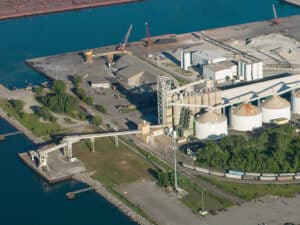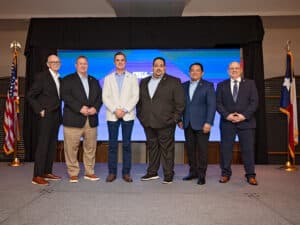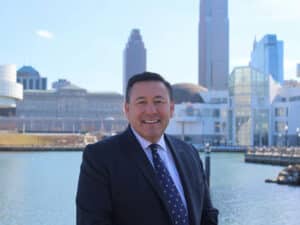
Q&A: Blume Global on global rail and marine intermodal logistics
Written by Heather Ervin
Pervinder Johar, Blume Global
Pervinder Johar, Blume Global CEO, offers his views on challenges the intermodal industry faces; preparing for future logistics disruptions; the role of advanced technology; supply chain visibility and sustainability; seamless transition of data from ocean carrier to rail in transit; and growth opportunities with Marine Log magazine.
Marine Log (ML): Can you tell us more about how your solutions have been integrated by ocean carriers and what results have they seen?
Pervinder Johar (PJ): With Blume Global, ocean carriers are able to automate manual processes, enabling them to improve agility and more efficiently manage their shipping networks. Ocean carriers are also then connected to our expansive intermodal network, making onboarding a simple and quick process.
Here’s an example of how we help ocean carriers: A top ocean carrier needed a solution that would seamlessly on-board and support fast growth in its motor carrier network as well as automate the processing of hundreds of millions of dollars in annual drayage invoices, including validation of work performed. They wanted to eliminate the blind spots in their container supply chain, manage their motor carrier vendors, improve their customer service responsiveness and replace manual processes for invoicing and work orders. Because of their complex network, they also needed a cloud-based solution that had established connections to the rail and motor carrier base.
They partnered with Blume to onboard 1,500 motor carriers, while consolidating their global operations. Blume provided automated and consistent transport order distribution to their provider network and real-time visibility with proof of delivery as well as electronic invoicing matched to the approved orders.
Another carrier came to us to eliminate the blind spots in their U.S. domestic inland container supply chain as well as automate their work order process. They needed a way to manage their motor carrier vendors, improve their customer service responsiveness, and replace manual processes for invoicing and work orders. Blume’s solution provided automatic, electronic documentation and proof-of-deliveries, work order generation, assessorial resolution and invoicing, as well as street-turn optimization. Blume’s street-turn optimization and domestic reload programs are becoming popular with ocean carriers because these solutions optimize asset movements while also reducing greenhouse gas emissions in the supply chain.
ML: Does your solution seamlessly transition its data from ocean carrier to rail for companies who utilize both during one transit?
PJ: Ocean carriers typically offer IPI Cargo service to and from the interior of the U.S. and Canada, and the carriage of the IPI Cargo is usually subcontracted and performed by one of the Class 1 rail carriers. The problem? Intermodal rail schedules, particularly ones that require connections among multiple rail carriers, are not easy to access. Blume leverages our data sourcing to provide ocean carriers the visibility to intermodal schedules, which they can then pass on to their customers. This allows all cargo interests to better manage the supply and transport of their goods with clear expectations of arrivals and departures. This type of clarity certainly adds tremendous value to businesses, as they plan out the logistics movement through their supply chain.
ML: Are you working on additional solutions for marine vessel operations?
PJ: We are currently engaged with a large marine terminal operator in the Southern California port complex to provide a platform on which cargo interests can procure VIP terminal services. These VIP terminal services are segregated into various levels of expedited cargo delivery and can be procured by the beneficial cargo owner, the freight forwarder or NVOCC, or the motor carrier.
These customers then have access to a streamlined process to effect expedited delivery of their shipments—that oftentimes includes seamless automation of gate appointments. With the current global spike in demand for consumer goods and the resultant congestion in a number of port complexes globally, there is certainly increasing demand from the marketplace for any way to facilitate expedited delivery of “hot” cargo from the ocean terminal.
This service also has a supply chain sustainability element. By reducing congestion at the terminal complex and the wait time motor carriers spend idling outside terminal gates, we are giving our customers greater control of their greenhouse gas emissions. Of course, the terminal solution is only one of the ways we help our customers promote a more sustainable supply chain. On the ocean side, our domestic reload program matches outbound and inbound moves, minimizing the need for empty repositioning. Repositioning with no cargo is quite literally shipping air—and expelling significant amounts of greenhouse gasses in the process.
To hear more about the global rail and marine intermodal logistics scene, listen to Marine Log’s Listen Up! podcast with Bill Shea, CEO of Direct Chassis Link Inc., and Johar.




